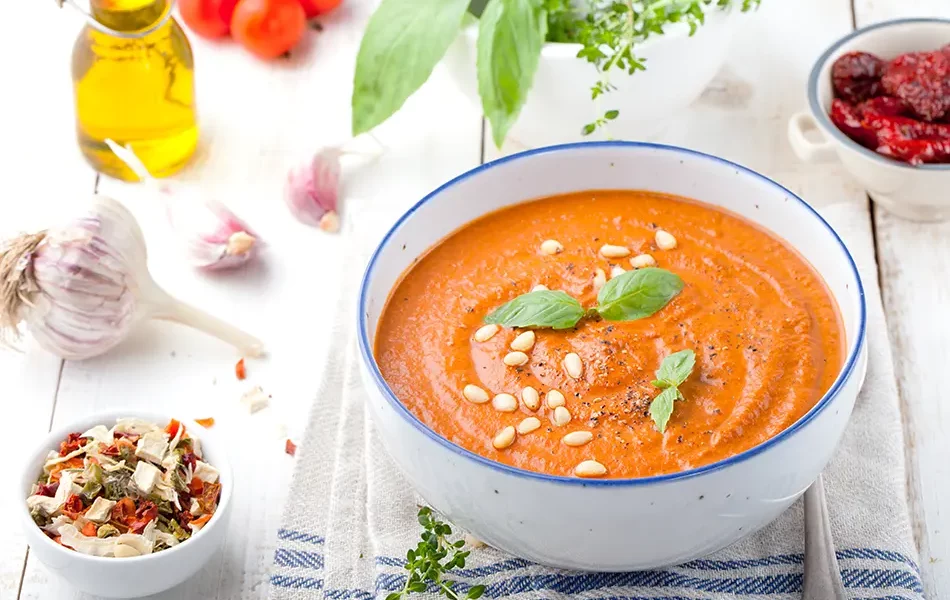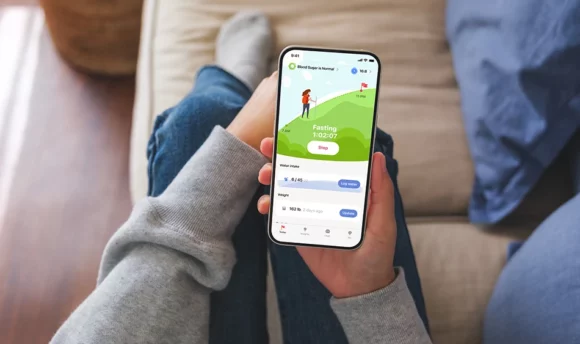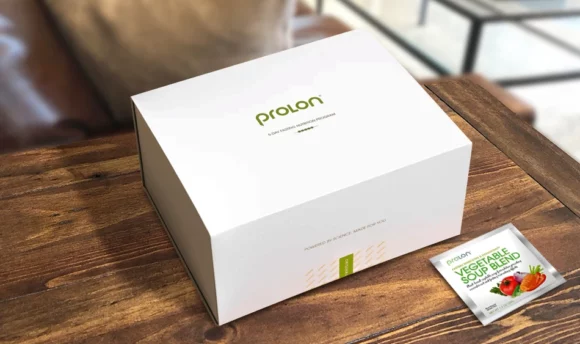What to Eat After Fasting: Restore Your Energy With These Foods
Planning your post-fast meals is vital to prepare your body for the reintroduction of food. So what should you eat and what not when your eating window arrives?

After fasting, you may want to eat anything and everything. You’re probably craving your favorite foods as your stomach rumbles and dreaming of what you’ll snack on first. But before you reach for foods high in carbohydrates, fat, and sugar, take a moment to reconsider.
It’s important to break a fast correctly, which means easing yourself into eating again to avoid overwhelming the digestive system. Certain foods can upset your stomach as they’re harder to digest. You might experience uncomfortable bloating, gas, and bathroom woes.
Discover the best foods to break a fast and make your intermittent fasting journey as comfortable as possible.
What to Eat After Fasting: Does Your Food Choice Matter?
What you eat after fasting matters. After hours without eating, you need gentle foods to reset your digestive system as you return to eating. Your body will get a shock if you suddenly consume processed foods and other meals that are overly hard to digest.
Consuming a large meal immediately after your fast can also cause discomfort. Plus, it can send your blood sugar and insulin levels soaring. It’s better to reintroduce small meals to minimize strain on the digestive tract and guide your body back into normal function.
Healthy foods are the best foods to break a fast. Your first meal should consist of mainly whole foods, with easily digestible carbs and protein, to carefully wake up your system. Eating a healthy diet will ensure you don’t cancel out the health benefits of intermittent fasting.
When should you eat after fasting?
You can eat as soon as your fast ends, but your meals should be light and small to reduce the risk of abdominal pain. Some people prefer to slowly introduce small amounts of food in the final stages of the fasting window to prepare the gastrointestinal system in advance.
How many meals you eat in the eating window and how often depends on the type of fasting you are practicing. For example, you’ll have twelve hours to eat if you’re using the 12:12 method, whereas you’ll only have a six-hour window if you decide to try the 18:6 program.
This only applies if you’re practicing intermittent fasting. Fasting for other reasons, such as religious purposes, can last for a more extended period.
7 Best Foods to Eat After Fasting
The following healthy foods are perfect for your post-fast meals. They are full of goodness to refuel your body after the fasting period. Best of all, they are easily digestible foods that are gentle on the stomach to limit digestive discomfort.
Here are the seven best foods to help you break a fast properly:
#1 Smoothies
Smoothies are always a good idea because they’re simple to make, easy on the digestive process, and you can pack them with nutrients. You can make blended drinks with a bunch of superfood ingredients to refuel your body, such as avocado and chia seeds.
Fresh fruit is ideal because it has a high water content for easy digestion. Among the best fast-breaking fruits are berries, bananas, and melon. Others are not so good. For example, citrus fruits (lemons, limes, oranges, etc.) are highly acidic and may upset your stomach.
The right smoothie recipe will make breaking a fast more comfortable. When deciding on a recipe, look out for ingredients with plentiful fat, protein, vitamin C, and water. You might be hungry, but start with a small to medium-sized smoothie to avoid overloading your system.
#2 Dried fruits
Dried fruits like apricots, dates, and raisins are good fast-breaking foods that provide you with carbs, fiber, and various other nutrients to restore nutrient balance. Additionally, they have natural sugar but a low glycemic index to help restore blood sugar levels after a long fast.
A standard portion of dried fruit is just 30 grams because the nutrients are more concentrated and higher in sugar. Try combining your chosen dried fruit with unsweetened yogurt to bulk out your first meal.
#3 Soups
Similarly to blended drinks, soups are solid food in easily digestible form. The components are already broken down, saving your digestive tract the job. You can get plenty of nutrients from healthy soup options. Tomato soup, for example, is great for you since it’s low in calories and full of antioxidants.
Homemade or organic bone broth has many health benefits. Bone broth can support weight loss, is packed with animal proteins, and is a rich source of collagen – the most abundant protein in the body.
It is considered one of the best fasting foods that you can actually consume during a fast to curb hunger. Just try to avoid those without added dairy products and excessive salt.
#4 Vegetables
You should avoid high-fiber, raw vegetables immediately after your fast, but cooked veggies are an excellent choice. Choose soft, starchy vegetables like white potatoes and sweet potatoes. Although non-starchy, broccoli and cauliflower have essential vitamins and minerals to nourish your body, including iron, magnesium, manganese, vitamin C, and B vitamins.
Cruciferous vegetables are harder to digest, but cooking them first is easier on your stomach. You could add them to a small salad containing other fast-friendly veggies, like cucumber and tomatoes.
#5 Fermented foods
Fermented foods can help a sluggish digestive system after fasting. They help your body digest food, and their probiotic content makes them a fantastic gut health hack to help fight bloating. For most people, a healthy and happy gut is just what you need after prolonged fasting.
You can get plenty of friendly bacteria from pickled vegetables, kefir, kimchi, tempeh, sauerkraut, and unsweetened yogurt.
#6 Healthy fats
Healthy fats are polyunsaturated and monounsaturated fats that are good for your heart. You can immediately reintroduce healthy fats to your diet with foods like avocado, olive oil, and eggs. A small plate of scrambled eggs with half a smashed avocado is a good starting point.
These foods are ideal for fighting off chronic diseases, including heart disease risk.
Fats should be your go-to choice if you’re practicing keto and intermittent fasting simultaneously since the ketogenic diet relies heavily on consuming good fats.
#7 Mediterranean food
Some swear by the Mediterranean diet for maintaining optimal health. The diet is primarily plant-based, with small amounts of dairy and animal protein from fish and poultry. It is an excellent place to start after fasting, as many Mediterranean dishes are easy to digest.
You could eat many Mediterranean staples, including raw fruit, chicken, fish, and olive oil.
Worst Foods to Eat After Fasting
Now you know the best foods to break a fast, let’s look at the foods you should avoid. It’s recommended that you skip foods high in saturated fat, dietary fiber, and sugar. These foods are more difficult for the body to break down and may lead to bloating, stomach cramps, and diarrhea.
Highly-processed foods and high glycemic carbohydrates are also a no-go because they can cause rapid blood sugar spikes.
Just to be clear, not all unprocessed foods work well after fasting. Even some of the world’s superfoods are unsuitable for a sensitive stomach, including legumes and raw cruciferous veggies.
Among the worst foods to break a fast are:
- Fatty foods, including red meat, bacon, hard cheese, butter, and cream
- Processed foods, like breakfast cereals, cakes, cookies, pastries, and white bread
- Dairy products, including cheese, milk, and ice cream
- Nuts, seeds, and nut butter
- Raw cruciferous vegetables
FAQs
Smoothies, soups, and soft starchy vegetables are some of the best foods to break a fast. They are kind and gentle to your gastrointestinal tract, allowing it to resume regular function without causing a nasty shock to the system. Always prioritize protein and easy-to-digest carbs.
Banana is a good food choice following a fast because it contains easily digestible carbs, making it easier on the digestive system. People often eat bananas when nauseous since they are easy to tolerate, but the fructose and sorbitol content may irritate some people.
Stick to small meals after fasting to prevent putting your gastrointestinal system under excess strain. Remember, when fasting, your system is on a break, and it needs time to start up again. Consuming a big meal may cause significant discomfort and bloating.
After three days of fasting, you should eat something small, gentle, and full of goodness to nourish your body. Keep it simple with a warming bowl of soup or bone broth. You could also cook some soft vegetables, like potatoes, broccoli, or cauliflower, to ease yourself into eating.
A Word From a Nutritionist
Fasting can help you lose weight, promote cellular health, decrease inflammation, and aid in chronic disease prevention. There are several reasons to try a fasting plan, but you need to approach it wisely, which means maintaining your fast and breaking it properly.
Eating problematic foods can cause a negative experience, with symptoms such as bloating, cramps, and diarrhea occurring. Try to eat natural foods, including raw fruits, cooked vegetables, whole grains, and healthy fats, to give your body a nutritional boost.
No matter how hungry you feel at the time, it’s essential that you don’t binge eat or eat too quickly. Try to eat slowly and only consume food in small portions as you restart your body. This will limit fasting side effects, particularly digestive issues like diarrhea.
Conclusion
Being mindful of the foods you eat after fasting will help you remain happy and comfortable throughout your fasting venture. Plan your meals in advance to make sure you’re ready for when the eating window begins.
If you wait until you’re cranky and hungry, you’re more likely to eat whatever is in sight and overload your gastric system with unhealthy foods. There’s no rule about how many calories you can eat, but it’s best not to overeat as this may hinder your weight loss progress.

















































 Select your language:
Select your language: 








